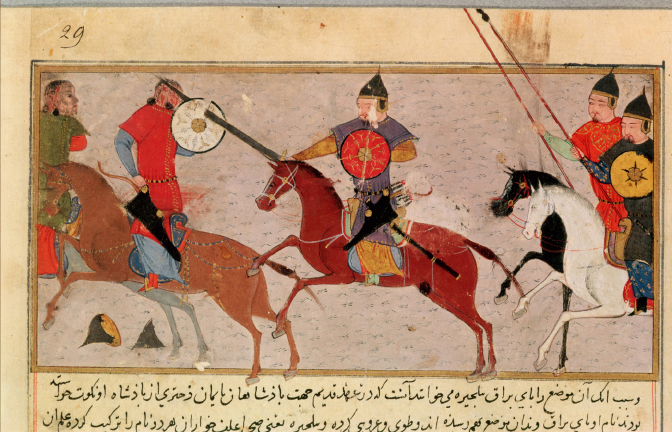VIEWPOINTS
| 12-2 | | The Role of a Mongol Leader in Battle |
| RASHID-Al-DIN, Chinggis Khan Fighting the Tartars (ca. 1300) |
Mongol military success was the result of many factors. The Mongols were expert horsemen who took full advantage of the speed and mobility of a mounted army. Moreover, the nomadic Mongol lifestyle was ideally suited to the training of tough, highly skilled warriors. In effect, Mongol boys grew up in a military camp, learning from an early age how to ride, hunt, fight, and survive. The skills they practiced daily made them formidable foes in battle. Finally, the Mongols were fortunate to have a remarkable leader in Chinggis Khan. As this illustration from a Persian history of the Mongols makes clear, Chinggis led his forces by example, placing himself at the head of his troops and plunging directly into battle. As you examine the illustration, ask yourself what it tells you about Mongol military prowess. How does it help explain the devastating effectiveness of Mongol armies?

READING AND DISCUSSION QUESTIONS
- What weapons are the Mongols shown using? How might their choice of weapons have multiplied the military impact of their skill as horsemen?
- What might the artist have wanted to convey about Chinggis’s qualities as a leader? What choices did the artist make in composition and subject matter to highlight these qualities?